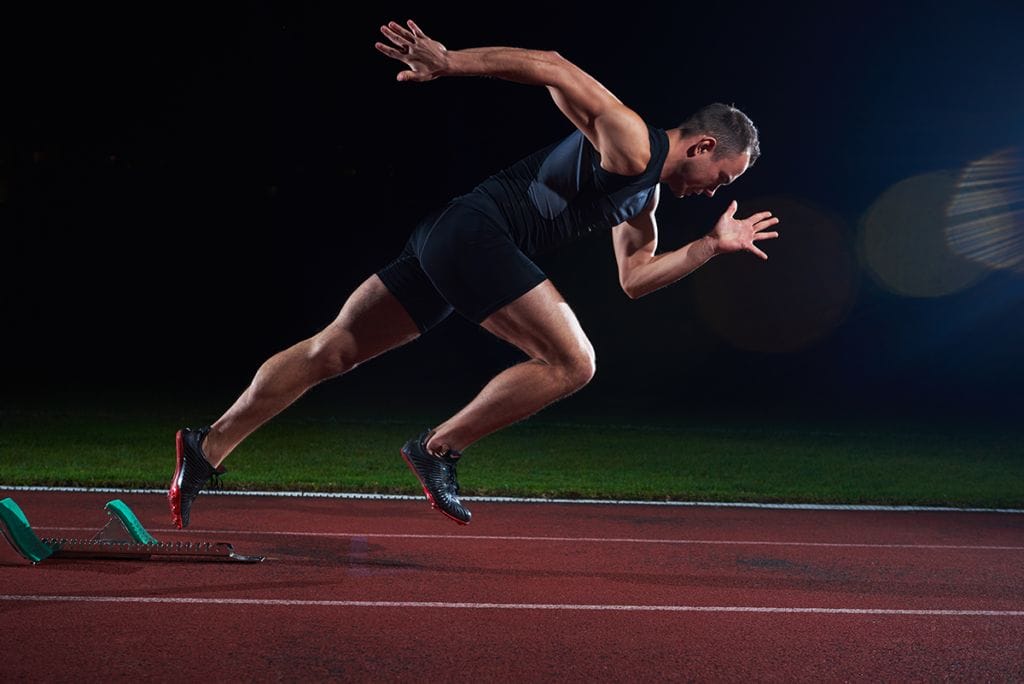Sprinting is a complex move for the whole body. It takes coordination & balance and depends on how fast the muscles contract and how much force can be applied while maintaining joint stiffness or stability.
Let’s categorize the primary muscles used for sprinting into groups.
- Posterior Chain
- Anterior Chain
- Lower Legs
- Arms
Posterior Chain
The posterior chain is composed of hip extensors, one of which is the glutes.
The glutes are made up of two sections: the gluteus maximus and the gluteus medius, giving the body vertical support when contacting the ground. These muscles help stabilize the body from over-rotation and sustain balance.
Another hip extensor is the hamstring which is made up of 3 muscles: the bicep femoris, semitendinosus, and semimembranosus.
The hamstring altogether is a propulsion system that stores a lot of elastic energy and contributes to the high output of force just prior to ground contact, while it is being lengthened.
Anterior Chain
The anterior chain consists of two groups: the hip flexors and the quadriceps. Hip flexion strength helps in positioning the leg to maintain good frontside mechanics as well as storing a lot of elastic energy, contributing to explosive starts.
Another important hip flexor action is its flexibility to aid in adequate hip extension for increased range of motion during running. The quadriceps help stabilize the knee during ground contact. Having a high degree of joint stiffness is necessary to support the vertical load of the athlete.
Lower Legs
The lower leg needs large amounts of isometric strength. Carrying large loads of bodyweight requires a lot of ankle stiffness and mobility. Ground reaction force is essential in glute activation. You can’t drive a car on flat tires, no matter how nice the car is.
Arms
Lastly, the arms can also assist in higher sprinting speeds. They are used primarily for counterbalancing the rotary action of the legs. They also help in horizontal propulsion during acceleration.
In essence, they work in helping the body to maintain clean form. You can’t paddle a boat straight with only one paddle on one side. The elbows have to extend equally in forward and backward swings, evening out each stroke.




